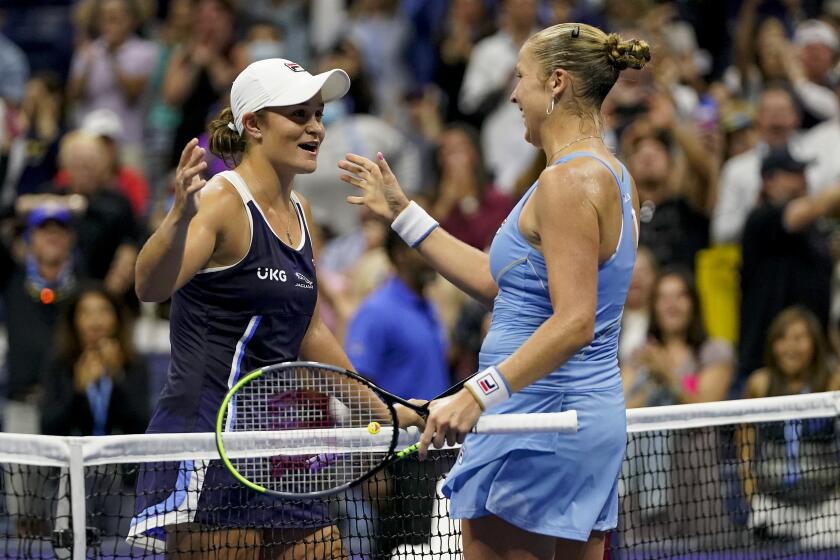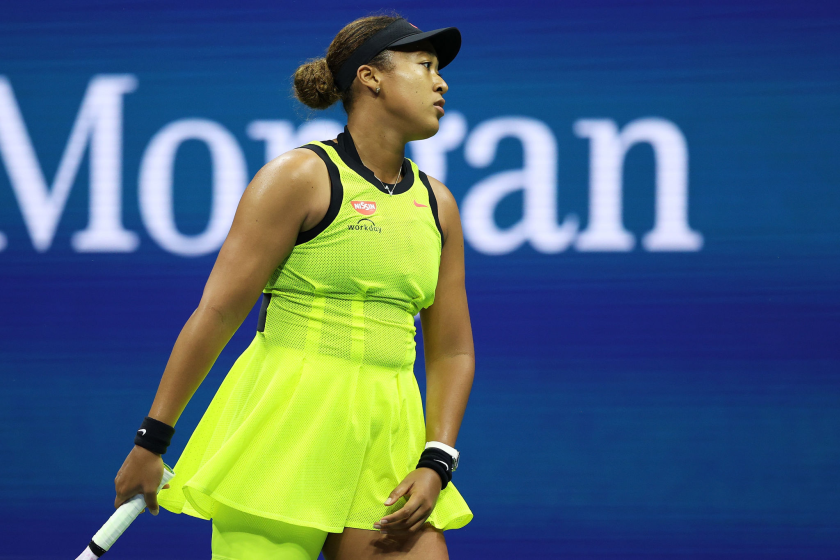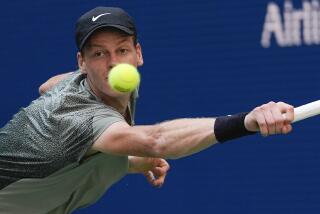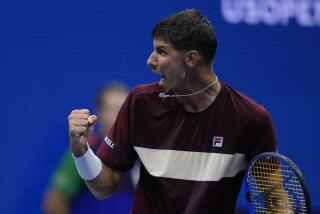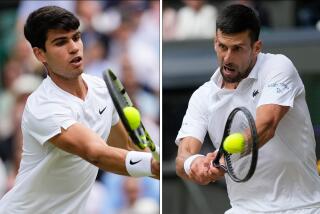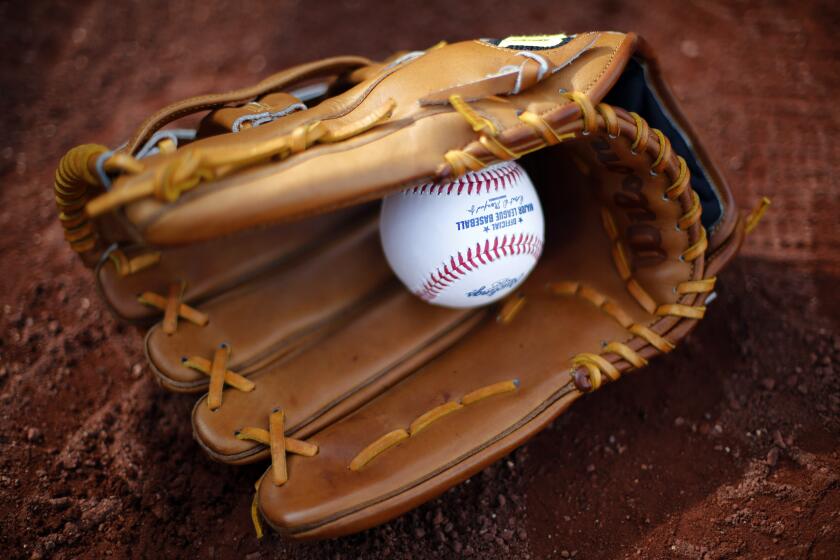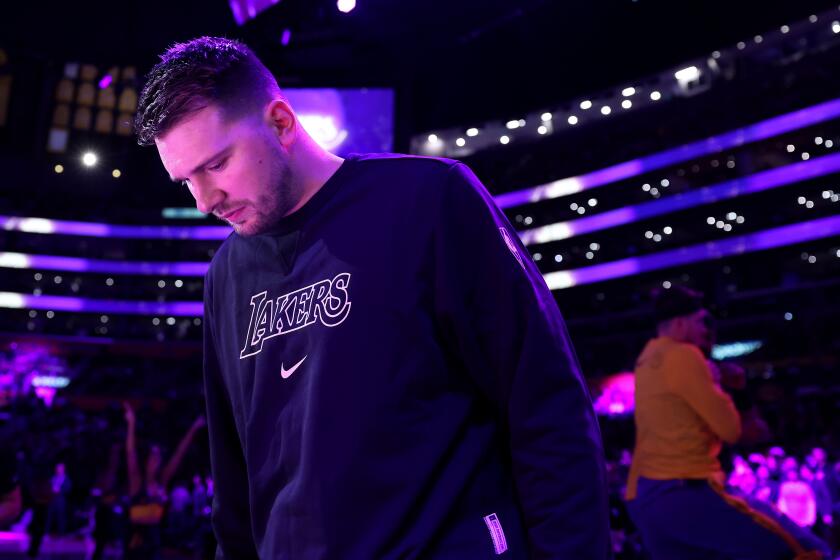Column: Who needs star power? Phenoms and late bloomers stealing the U.S. Open limelight
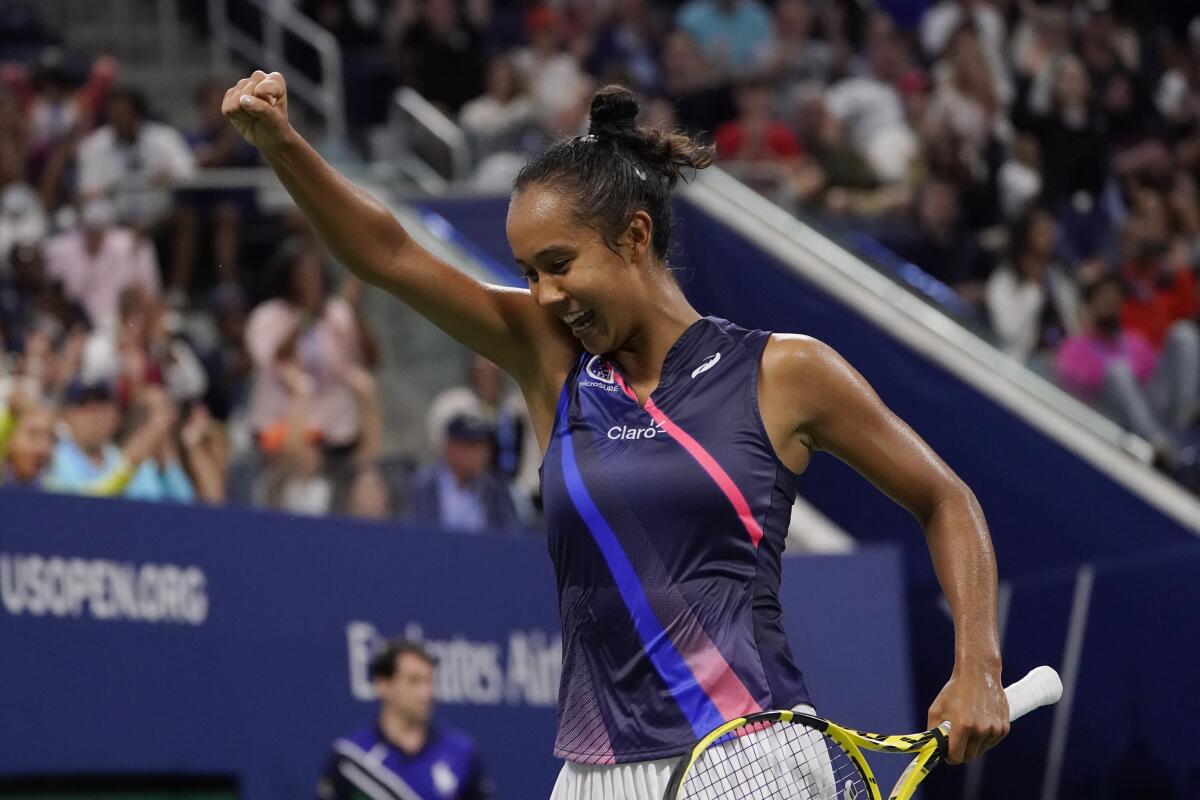
- Share via
NEW YORK — What a revelation the first week of the U.S. Open has been. Phenoms, late bloomers, the unheralded and unseeded have all provided compelling reasons to cease mourning the injury-related absences of Serena Williams, Roger Federer and Rafael Nadal and appreciate the stars who are boldly emerging just when tennis needs them most.
The latest charge was led by Leylah Fernandez of Canada, who turns 19 on Monday, and 18-year-old Carlos Alcaraz of Spain, who followed up their third-round upsets with formidable performances that launched them into the quarterfinals. Felix Auger-Aliassime of Canada, 21, joined them after a splendid 6-4, 2-6, 7-6 (6), 6-4 victory over Frances Tiafoe of Maryland.
Fernandez replicated her dismissal of defending champion and No. 3 seed Naomi Osaka with an equally impressive 4-6, 7-6 (5), 6-2 undoing of 2016 U.S. Open winner Angelique Kerber on Sunday. Alcaraz, who outlasted No. 3 Stefanos Tsitsipas on Friday, returned Sunday for a 5-7, 6-1, 5-7, 6-2, 6-0 decision over qualifier Peter Gojowczyk. Alcaraz is the youngest U.S. Open men’s quarterfinalist since the Open Era (pros playing against amateurs) began in 1968.
American Shelby Rogers stunned Ashleigh Barty and the tennis world Saturday by rallying to a 6-1, 1-6, 7-6 (5) victory at the U.S. Open.
“Seeing all these teenagers, the youngsters doing so great at the U.S. Open and the other tournaments, too, is also eye-opening I think to the world, to the tennis world,” Fernandez said, “because there is not only like one group of tennis players but there is a new wave of young generations that’s coming up and just trying to make an impact in the tennis game as much as they can.”
Following the pattern of her match against Osaka, Fernandez lost the first set to No. 16 seed and fellow left-hander Kerber, won the second in a tiebreak, and played a powerful third set. Fernandez, who trains in Florida, was down 2-4 in the second set after Kerber went on a run and won seven of eight games. But Fernandez remained calm, breaking for 4-4 and battling through the tiebreak. She finished the set with 20 winners, to 11 for Kerber.
“At 3-4, I don’t know if it was just a mindset or it was a feeling, but I just felt like that was the moment that I was going to break her serve and I was able to figure it out,” Fernandez said. “I was just glad I was having fun on the court. I was trusting my game at 100%.”
She acknowledged she was tired in the final set but that’s where youth outweighed 33-year-old Kerber’s experience. “I was telling myself, like, ‘If I’m tired, she must be exhausted. Just try to put one more ball back in as much as possible,’” Fernandez said.
Fernandez triggered skepticism last December when she said her goal for 2021 was to be ranked in the top 10. She has a way to go — she’s No. 73 — but her goal doesn’t seem outlandish anymore. “She has a lot of power in her forehand and she’s going for her winners. You know, I think she’s always also enjoying her tennis out there,” Kerber said. “It was a tough match. Yeah, I think she can go really far in the next few years.”
If beating Tsitsipas has raised expectations for Alcaraz, he’s fine with that.
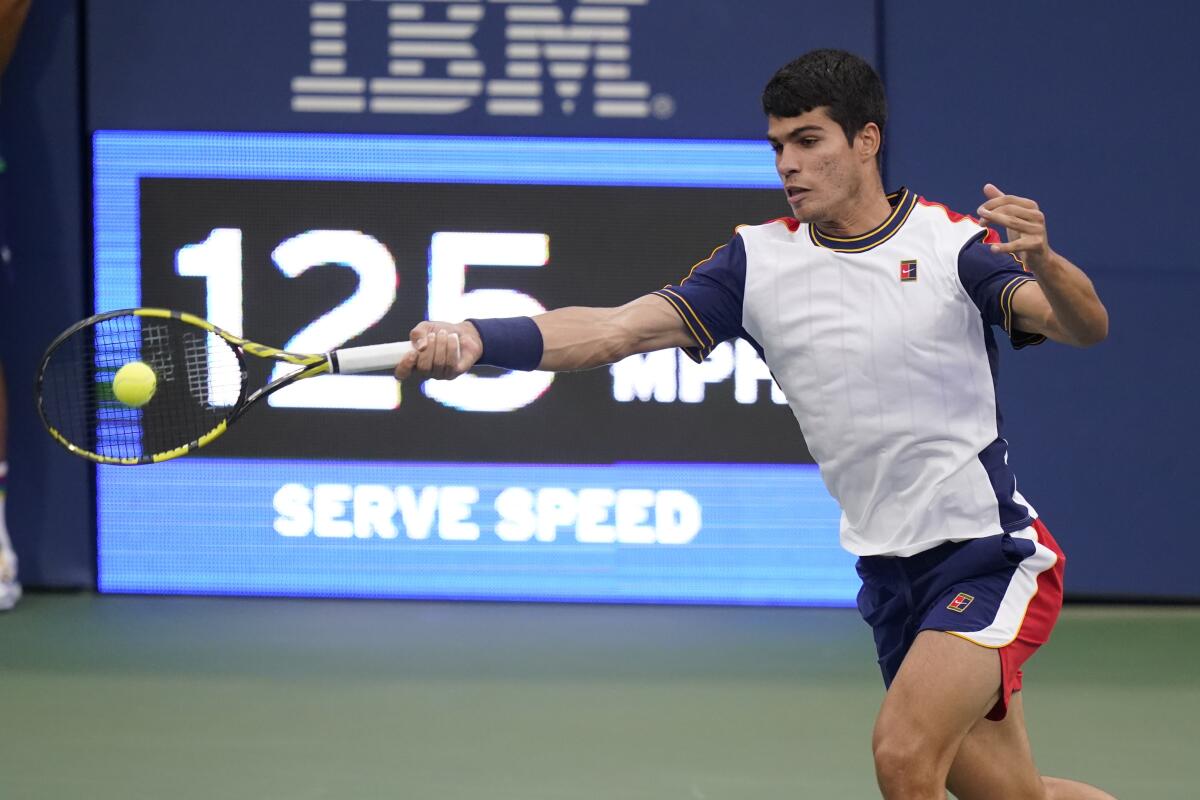
“It’s really tough to play these kind of matches, to play fifth sets. And, yeah, I mean, I hope to play more second weeks, to play more quarterfinals of Grand Slams,” Alcaraz said. “I didn’t expect to play quarterfinals here. So I think it’s a really good performance from me in these matches, so I’m really happy to play these kind of matches.”
Auger-Aliassime reached the quarterfinals at Wimbledon this year and is the youngest player to advance to two consecutive Grand Slam quarterfinals since Juan Martín del Potro did so at 20 in 2009. Oddly, Auger-Aliassime will be the “old” man in his quarterfinal against Alcaraz. “He’s a great player,” Auger-Aliassime said. “At some point age is just a number. He already feels like a player that’s established.”
Botic van de Zandschulp of the Netherlands, 25, was never a phenom. Two years ago at this time he was 340th in the world. He came here No. 117 and had to claw through qualifying to reach the main draw. He lost the first set in each of his two qualifying matches and each of the first three rounds before he faced No. 11 seed Diego Schwartzman on Sunday. Fatigue loomed as an additional opponent.
Despite the extra time he had spent on court and nerves that caused him to squander two match points in the fourth set and two in the fifth set, Van de Zandschulp advanced to his first Grand Slam quarterfinal with a stirring 6-3, 6-4, 5-7, 5-7, 6-1 decision over 14th-ranked Schwartzman at Louis Armstrong Stadium.
Naomi Osaka lost to Leylah Fernandez in the third round of the U.S. Open, then said she needs another break from tennis to deal with mental health issues.
“I knew that I could beat players who are ranked 20 or 10 in the world. But I didn’t do it like this often, this consistently,” he said. “I think I’m playing really consistently here, showing some good tennis throughout the whole tournament. So, yeah, that’s new for me.”
Van de Zandschulp’s quarterfinal opponent will be No. 2 Daniil Medvedev, who rolled past No. 24 Daniel Evans 6-3, 6-4, 6-3 at Arthur Ashe Stadium. Medvedev hasn’t lost a set here, and he hopes being fresher will give him an edge. “He has some matches in his legs. I’m going to try to use it and try to win, yeah,” Medvedev said.
His strategy might work. It might not. Not much at this U.S. Open has gone as it was supposed to, and that’s the best thing that could have happened.
More to Read
Go beyond the scoreboard
Get the latest on L.A.'s teams in the daily Sports Report newsletter.
You may occasionally receive promotional content from the Los Angeles Times.

